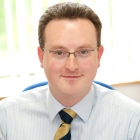Heating entrances — specifying the right solution

With a wide choice of heating solutions for entrances and doorways, it can be difficult to know which is best for your needs. Phil Chilton of Dimplex considers some common situations faced in a variety of sectors — and suggests the best solution for each requirement.
‘I like to leave the main doors open to provide a more welcoming entrance, but in winter I feel like my heating bills are going straight out the door.’
 |
| Loading bays in warehouses can benefit from air curtains. |
In such a situation, which is extremely common in the retail sector, air curtains are undoubtedly the best solution. Air curtains work by using a fast-moving airstream to ‘seal the gap’ created by open doorways, enabling buildings to hold on to treated air and ultimately reduce overall energy consumption.
They can reduce heat loss through doorways and service entrances whilst preventing cold air, insects, pollution and odours from entering the building. They can be used in summer too, maximising the performance of air-conditioning systems by keeping treated, cooled air inside.
‘We have considered air curtains, but our entrance doorway is nearly 4 m high. Will I be left with a gap at the bottom?’
Not if you specify the correct product. You’ll need a high-performance air curtain like the Dimplex DAB range, which offers a maximum mounting height of 4 m and which can even be recessed into the ceiling. Make sure you check the mounting height of the product before you install it because any gaps will result in lost energy and reduced performance.
|
5 TIPS TO ENSURE A SUCCESSFUL AIR CURTAIN INSTALLATION 1. Full width airstream: The air curtain should be at least the same width as the door opening, ideally up to 100 mm wider. Anything shorter than the open-door width will result in gaps and reduce the efficiency of the product. 2. Distance from opening: The closer the air curtain is installed to the doorway opening, the better. A gap of up to 100 mm into the room from the opening façade will ensure the best results, and the air outlet should be positioned no more than 250 mm from the top of the door. 3. Measured air speed: Air curtains come in a variety of mounting heights, which will determine the air speed and can ensure a ‘seal’ right the way down to the floor. For the best results, the measured air speed 0.5 m above the floor should be at least 2 m/s, which is why high-performance air curtains like the Dimplex DAB range are best suited for taller openings. 4. Controls: A range of additional controls can help to reduce the running costs of any air curtain. Auto energy control, such as a door contacts, PIR sensors, weather compensation or a product which is linked to the building management system will offer the best performance. Alternatively, time or temperature controls can offer improved efficiency. 5. Service and maintenance: Like any installed product, installation is just one part of ensuring optimum performance. An annual service is recommended for any air curtain, together with regular cleaning and maintenance as recommended by the manufacturer. |
‘We don’t get the footfall to justify leaving the door open all day, but we’re still keen to replace lost heat when the front door is used.’
In these situations we would recommend overdoor heaters, which are available for single or double doorways and offer a ‘warm welcome’. Whilst they do not provide the ‘seal’ offered by an air curtain, overdoor heaters provide multi-directional, powerful and effective heating above the entrance to shops, offices and almost any small doorway.
 |
| A vertical air curtain can prevent revolving doors causing discomfort. |
‘We already have an air curtain because the doors are left open for safety in peak times, but when the doors are shut it’s often working unnecessarily because nobody turns it off. Can we link the air curtain to a sensor so we don’t have to manually switch it on and off?’
Air curtains can be linked to a range of additional controls to optimise performance and help reduce running costs. Auto energy control, such as a door contacts, PIR sensors, weather compensation or a product which is linked to the building-management system will offer the best performance, while simple time or temperature controls can also offer improved efficiency.
‘We have a number of large entrances in the warehouse which are often left open for forklifts or for lorries to back up for loading/unloading. The gap is too big for an air curtain, but is there another solution?’
At this end of the scale you would need an industrial air barrier, which delivers a super-high-output airstream for doors up to 6 m high. Often found in large warehouses, factories and distribution centres, these super-high-power air curtains can cut the running costs of a busy facility, whilst improving the working environment.
Phil Chilton is commercial products manager for Dimplex.







